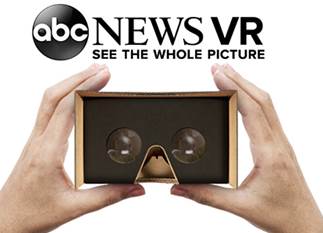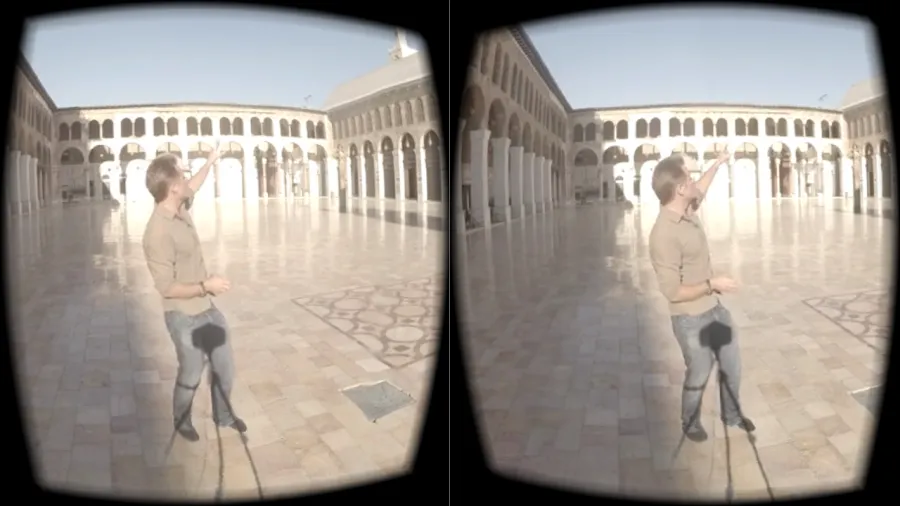In what is claimed as a “first for network television news,” ABC News took one of Jaunt’s cameras to Damascus in Syria for a 360-degree report talking about the people, history and art of the war-torn country.
The report represents a collaboration between ABC News and the 360-degree video startup that should bring a lot of attention to VR as a platform. It is available through Jaunt’s app that can be used with Google Cardboard viewers. Reports by Alexander Marquardt for World News Tonight and Nightline are being paired with the panoramic video report that’s downloadable to your mobile phone. Assuming ABC News promotes the Jaunt app during those broadcasts, the effort should bring a lot of attention to VR.
Here’s how ABC News President James Goldston described the effort in a note to staff:
This rare access also included the streets and historical sights of Damascus, now largely cut off from the outside world. Alex and his team explored those streets with one of Jaunt’s stereographic cinematic VR cameras, documenting the city’s sites – historical treasures now in peril. From the Damascus Citadel and Souk to the Umayyad Mosque and the National Museum, Alex transports viewers into the story, providing a depth of reporting –and a personal guide- unlike anything we’ve done before.
Previously, “Clouds Over Sidra” was produced by Gabo Arora and Chris Milk for the VRSE app about a young refugee among tens of thousands of Syrian refugees in Jordan.
Even as existing organizations are rapidly adopting 360 video technology, there is some debate about just how immersive these videos can really get. See this tweet from Valve’s positional tracking architect as an example:
Spherical photos and video are not VR! They are one form of content you can experience in a HMD, but they basically suck.
— Alan Yates (@vk2zay) September 15, 2015
While 360 videos and photos are quite different from other kinds of content you can see in a head-mounted display, the technology provides a relatively easy way for professionals experienced with existing storytelling techniques to capture real-world content and present it in a panoramic way to a very large audience inside VR. Done right, 360 videos and photos are incredibly engaging forms of immersive content. Like the rest of VR the medium is still in its infancy, and what’s around the corner might just bridge the gap in the debate.






























